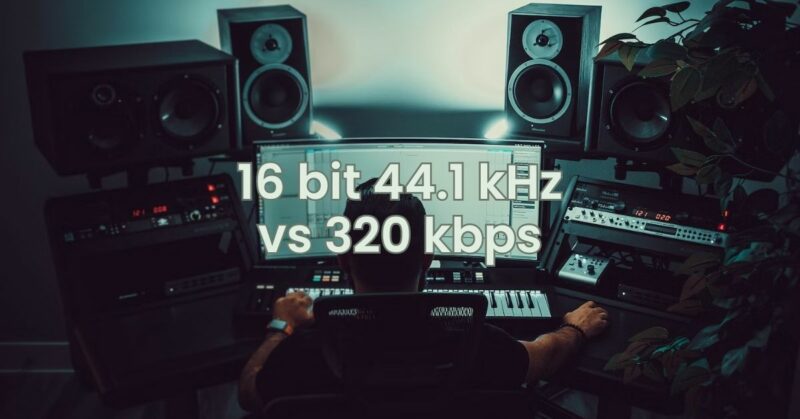When it comes to digital audio, choosing the right format can significantly impact the overall audio quality and file size. Two commonly compared formats are 16-bit 44.1kHz and 320kbps. Both formats are widely used in different contexts, each with its strengths and limitations. In this article, we will explore the characteristics of 16-bit 44.1kHz and 320kbps audio, their advantages, and when it is appropriate to use each format.
16-bit 44.1kHz:
1. Bit Depth (16-bit): 16-bit audio refers to the number of bits used to represent each audio sample in a digital audio file. It provides a dynamic range of approximately 96 decibels (dB), allowing for a wide range between the softest and loudest sounds in the audio.
16-bit audio is the standard bit depth used for audio CDs. It offers a sufficient level of audio quality for most listening scenarios, capturing most of the subtle nuances in the sound.
2. Sample Rate (44.1kHz): 44.1kHz represents the number of audio samples taken per second to represent an analog audio signal digitally. This sample rate was chosen for CDs and has become the standard for digital audio in many applications.
A sample rate of 44.1kHz can accurately reproduce frequencies up to approximately 20 kHz, covering the entire audible range of human hearing.
320kbps:
320kbps refers to the audio compression rate used in formats like MP3 (MPEG-1 Audio Layer III). This format is commonly used for digital music distribution, particularly for online streaming and downloads.
Advantages of 16-bit 44.1kHz:
- CD Quality: 16-bit 44.1kHz is the format used for audio CDs, ensuring that music released in this format can be played on standard CD players.
- High Audio Fidelity: This format offers a sufficient level of audio quality for most listening scenarios, capturing most of the subtleties in the sound.
- Widespread Compatibility: 16-bit 44.1kHz is widely supported by various audio devices and software, making it a practical choice for distribution and playback.
Advantages of 320kbps:
- Reduced File Size: 320kbps audio compression reduces the file size significantly compared to uncompressed formats like WAV. This makes it more practical for storage and streaming, especially for online music services.
- Acceptable Audio Quality: For most listeners, 320kbps offers audio quality that is perceived as very close to or indistinguishable from the original CD quality, especially when using good-quality audio equipment.
When is 16-bit 44.1kHz Suitable?
16-bit 44.1kHz is suitable for various applications, including:
- Music Distribution: When distributing music for CD production or digital platforms, 16-bit 44.1kHz is the standard format that ensures compatibility with CD players and widespread playback support.
- General Listening: For everyday listening on various devices, 16-bit 44.1kHz provides a satisfactory level of audio quality and captures most of the musical details.
When is 320kbps Suitable?
320kbps is suitable for:
- Digital Music Distribution: For online music services, 320kbps is a popular format as it balances audio quality and file size, allowing for faster downloads and smoother streaming.
- Limited Storage: When storage space is a concern, 320kbps offers an acceptable compromise between audio quality and file size.
Considerations:
- Perceived Audio Quality: In blind listening tests, some listeners may not be able to distinguish between 16-bit 44.1kHz and 320kbps audio, especially with average audio equipment and listening environments.
- Use Case: The choice between these formats should consider the specific use case and requirements. For critical listening or audio production, uncompressed or higher-resolution formats may be preferred. For casual listening and online streaming, 320kbps is often more than sufficient.
Conclusion:
Both 16-bit 44.1kHz and 320kbps are widely used and offer advantages in different scenarios. 16-bit 44.1kHz is the standard for audio CDs and provides high audio fidelity, making it suitable for music distribution and general listening. 320kbps, on the other hand, is popular for digital music distribution, offering a balance between audio quality and file size. Ultimately, the choice between these formats depends on your specific needs, listening preferences, and the use case for the audio content. With either format, you can enjoy an enjoyable and satisfying audio experience that suits your requirements.


